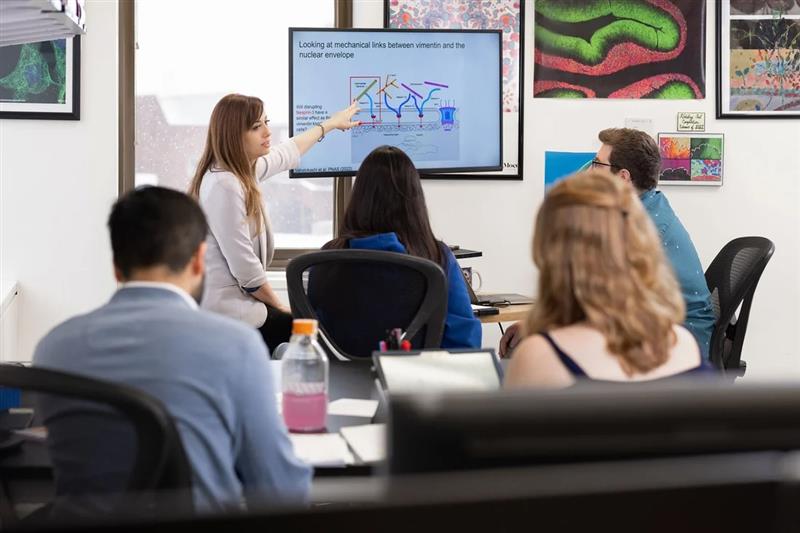Historically, women have been underrepresented in the fields of science, technology, engineering and math (STEM). But at Syracuse University, many of our award-winning and nationally recognized faculty in the STEM fields are women. They are doing innovative research that will shape our future and, through their mentorship and teaching, supporting the next generation of STEM leaders.
Recently, Syracuse Stories wrote a spotlight on five nationally recognized faculty members from across the university and their groundbreaking research. Two of them are members of the BioInspired Institute.
Alison Patteson studies how cells move, regenerate and respond
Physics professor Alison Patteson’s research is situated at the intersection of physics, biology and engineering. She was recently awarded a range of prestigious honors, including a National Science Foundation CAREER Award, a Cottrell Scholar Award, a Sloan Research Fellowship and the 2024 Maria Goeppert Mayer Award. Patteson studies how biological systems—animal cells and their components, and bacteria—respond to and navigate their physical environments. “I’m interested in living materials and what they can do that nonliving materials, like concrete and rubber, can’t do—such as regeneration and self-pattern formation,” she says. Patteson’s work is central to the BioInspired Institute, which supports research into complex biological systems and living materials and contributes innovative insights toward addressing global health and development challenges.

Mirna Skanata explores how decisions form in a brain
Mirna Skanata, professor of physics and recent recipient of the competitive McKnight Technological Innovations in Neuroscience award and an NIH Maximizing Investigators’ Research Award, jokes that she is devoted to understanding how maggots think. Employing a custom-developed tracking microscope, Skanata can watch the activity of individual neurons in fruit fly larvae, as they move about their environment. The goal, she explains, is to understand how information about the sensory environment gets processed and turned into decisions within the brain. The work of her interdisciplinary lab, which draws on neuroscience, molecular biology, engineering and computer science and is part of the BioInspired Institute, holds implications for broader fields, including potential insights into neurological diseases.

–by Sarah H. Griffin
